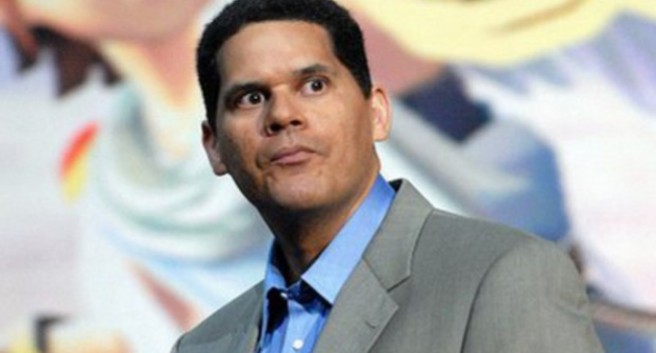Reggie on Amiibo crossovers, Wii U vision hasn’t changed, alleviating game droughts
IGN has gone live with several new quotes from Reggie Fils-Aime. The Nintendo of America president was asked about the possibility of Amiibo crossovers, Nintendo’s vision for Wii U, and how the company intends to avoid game droughts.
You can find a few interview excerpts below, and more over at IGN.
On crossover opportunities between Skylanders, Disney Infinity, and amiibo…
“What we communicated in the Nintendo Digital Event was that Infinity and Skylanders enjoy significant share on our platforms. For both of those products, more than 50% of the volume is represented on Nintendo platforms. What is not going to happen is cross usage play of amiibo onto those platforms. And that’s because the amiibo platform is completely different. Its different in that it’s NFC-based, so that’s why we’re able to utilize the technology built right into the GamePad. Their platforms are different.”
“You will see cross-platform play between the characters introduced for Smash Bros. And then be able to use these figures on other games. And we touched on that. You’ll be able to use the figures on Mario Kart. You’ll be able to use the figures on Captain Toad, Mario Party, as well as Yoshi’s Wooly World. So that’s the cross-platform play that we were trying to communicate.”
On whether Nintendo’s vision of Wii U changed in the last six months…
“I would say that the vision hasn’t changed. We do believe the innovation of the GamePad is a big step forward for the industry. We believe that bringing new ways to play is critical for our platform to be effective. We also believe that the key points of games, plus other entertainment, plus social features are a key element of our proposition. What I would say is that we have been slower than we wanted to be in bringing the key games into the marketplace that leveraged the full functionality of the system.”
“Just look at the games that we launched over the last nine months. Everything from Super Mario 3D World to Wii Fit U. Let’s include Pikmin 3 in that group. Let’s include Zelda [Wind Waker] in that group. These are all games that we wanted to launch earlier in the system’s life. And because they have not launched early, we have not been able to create the momentum that we wanted. We’ve really seen that change as we launched all of these key games, very highly rated games from a Metacritic perspective. And now we feel that, with the launch of Mario Kart, which has driven some very nice momentum for our business. With these games we’re showcasing at this E3 that are all coming in the next couple of months. Everything from Bayonetta 2 to Smash Bros., all of these key games coming in the near term. We think it’s this pace of product launch that we need to really drive momentum for Wii U.”
On what Nintendo is doing to alleviate the software droughts between game releases…
Fils-Aime: “We’re doing a couple of things. First, we’re doing much more second-party development. Everything from Bayonetta 2, which is an exclusive to Wii U game, Devil’s Third is an exclusive to Wii U game. Certainly, leveraging more second-party development is critical to us. The other thing we’re doing is much more with independent developers. And I would argue that this is a big industry shift that’s happened over the last couple of years. You look at all of the developers that have left the large major third-parties to create their own small studio. We’ve been able to attract them not only with some of the tools made available, like Unity. But also the fact that these developers love having their content merchandised in our eShop right alongside Mario and right along Zelda versus putting them in separate area with all other Indie content. We merchandise it along with all of our other key games, which really helps the sell through of this independent content.
“So second-party, independent content, along with great first-party content. Along with strong third-party as well, in terms of the support we’re getting from Ubisoft, Warner Bros., and a number of the Japanese third-party developers. For us, that’s how we have to mitigate this potential of longer wait times between product launch.”
